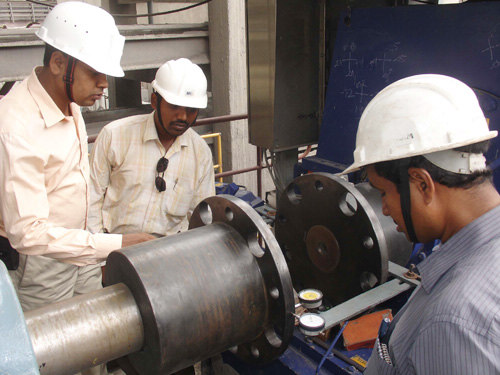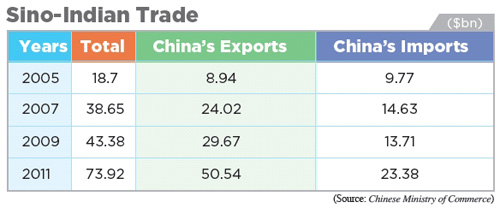|
 |
|
LOCALIZATION: Local employees in India work on a project of SEPCO III, a Chinese company specializing in building power plants (COURTESY OF SEPCO III) |
India's restricted visa policy is part of its policies on domestic employment protection, said Lou. Work and project visas to India are more difficult to get, which affects Chinese companies' investment in India.
Some Chinese construction companies complained that, due to visa difficulties, many technicians were unable to reach construction sites in time and the completion of their projects was often delayed.
"In fact, those Chinese projects could generate a large number of jobs for local Indian people, especially those concerning infrastructure construction," Lou said.
The chief representative of a Chinese power construction firm's Delhi office who asked to remain anonymous because of the sensitiveness of the visa issue told Beijing Review that most of their onsite employees are local people and more than 50 percent of the managerial staff are Indians, including translators, human resources directors, finanyulintao cial officers and deputy project managers.
"There are great opportunities for Chinese construction enterprises as India is conducting large-scale infrastructure construction. Its annual budget on infrastructure construction this year is $27.7 billion. Meanwhile, China has rich experience in the field as well as advantages in construction technology and machinery," said Lou.
According to India's 12th Five-Year Plan (2012-17), it will invest $1.2 trillion in infrastructure construction over the next five years.
Complementary economies
Lou said given their different development models, China and India have many complementary aspects to each other's economic development. Close cooperation between the two will benefit both countries, in construction as well as other industries. With an enormous labor force, India is one possible destination for China's labor-intensive industries as China restructures its domestic economy.
"Take the textile industry as an example," Lou said. "China has technological and machinery advantages while India is rich in raw textile materials and low-cost labor. Chinese textile producers could invest in India for better development."
"Meanwhile, India has advantages in information technology, service industry and biological pharmacy. Indian companies in these fields can develop their potential in the Chinese market," he added.
Some Indian economic observers hold similar views. Mohammed Saqib, Secretary General of the India China Economic and Cultural Council, said as China's labor cost continues to rise, Chinese enterprises moving to India may find space for development. India should learn from China's experience in the last three decades by seizing the chance of industrial transfer among the emerging Asian countries. Currently, China is upgrading its industries and India should attract more Chinese enterprises to invest in India, Saqib said.
"On the international scene, we look at how these two merging countries are doing. China is the factory of the Earth, and India's growing service sector is a powerhouse," said Anwarul Hoda, Chair Professor of the Trade Policy and WTO Research Program at the Indian Council for Research in International Economic Relations. "But we do have to boost the manufacturing sector to provide good jobs to our hundreds of millions of people in the next decade."
However, despite the huge potential for cooperation between the two countries, obstacles like the visa issue still exist. For India, a major point of concern is the large bilateral trade deficit in China's favor in recent years, which may add fuel to protectionism in India.
"The trade imbalance between the two countries is due to structural reasons," said Lou. "Before 2006, the bilateral trade imbalance was in favor of India. But now, China has advantages in the manufacturing industry such as heavy machinery equipment and electronic equipment. These products have higher added value than iron ore, which accounts for about 60 percent of India's exports to China."
"The problem should be resolved gradually through economic development," Lou added.

Email us at: yulintao@bjreview.com | 